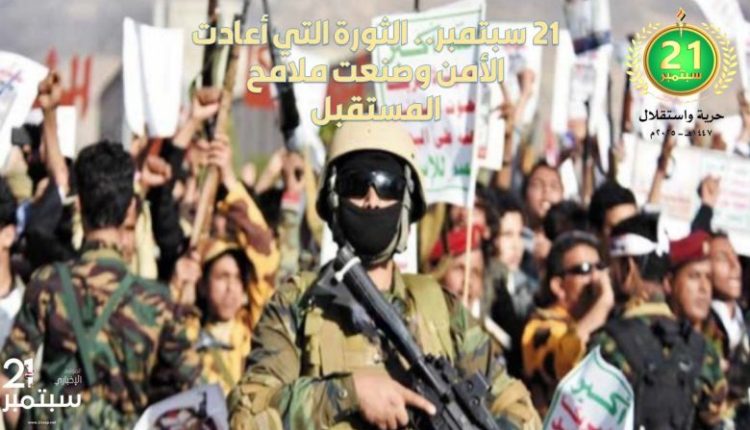September 21… The Revolution That Restored Security and Shaped the Future
The September 21, 2014 revolution was not a passing event in Yemen’s history; it constituted a clear break between two eras — an era of dependence, tutelage and subservience, and an era of liberation, dignity and independence.
This revolution unleashed the will of a people who for decades longed to be freed from foreign domination. Drawing inspiration from the Qur’anic Movement that revived the nation’s spirit of awareness and renaissance, the revolution reshaped collective consciousness and sketched the outlines of a civilizational national project led by the Qur’an and expressed through the people’s awareness, steadfastness and sacrifices.
The Qur’anic Movement — the Compass that Lit the Path of the Revolution
From its inception, the September 21 revolution carried an integrated project rooted in the Qur’anic Movement founded by the martyred leader Hussein Badr al-Din al-Houthi, which became the ideological and spiritual compass of this blessed revolution.
The Qur’anic Movement was not merely sermonic rhetoric or a cultural activity; it was a revivalist project that changed the balance of the conflict, implanted in the people a spirit of resistance, and linked them to the Qur’an as a source of strength and liberation, away from subservience to the arrogant.
The vision of the martyred leader was the first spark that illuminated the way and awakened a latent national consciousness. The September 21 revolution thus emerged as a natural continuation of that vision, transforming Yemen into a bastion of resilience and a radiating center confronting global arrogance by land, sea and air.
Security — the Fruit of the Revolution and the Foundation of the Future
On the security front, the September 21 revolution transformed reality at its roots. Before it, Sana’a was mired in rampant insecurity: daily terrorist bombings, systematic assassinations, compromised and paralyzed security agencies, and a capital intended to be a stage for chaos serving American and Saudi agendas.
With the revolution’s victory, the scene changed radically:
Terrorist and extremist groups were purged from the capital and the liberated areas.
Security institutions were rebuilt on independent national foundations, becoming more professional and resilient.
Extensive espionage networks tied to the U.S., Britain and Saudi Arabia were dismantled.
Most importantly, citizens regained their sense of safety: Sana’a changed from a city of fear and chaos into a city of security and stability. This transformation was no accident — it was the direct result of the revolution and its principles, and the unprecedented popular cohesion between the people and their security institutions. The citizen himself became a vigilant eye and a pillar of security, turning the home front into a fortress difficult to penetrate.
Safe Sana’a Versus Occupied Provinces
While residents of Sana’a and the liberated areas enjoy comprehensive security, the occupied provinces live under the tools of aggression in a state of chaos and lawlessness:
Mercenary factions fight for influence.
Daily assassinations and organized crimes occur.
Terrorism spreads under Saudi and Emirati cover.
Thus the stark contrast appears: in Sana’a — security and stability thanks to the leadership of the revolution and the Qur’anic project; in the occupied provinces — chaos and destruction caused by subservience to the forces of aggression. This paradox clearly shows that security is not achieved by money or foreign force, but by sovereignty, independence and attachment to the Qur’anic identity.
Building the Future — the Revolution’s Vision for a Civilizational Path
The September 21 revolution did not stop at restoring security; it laid the foundations for a new future for Yemen:
A future based on national independence free from external domination.
A future that redefines Yemeni identity as an integral part of the identity of the Islamic nation.
A future that ties development and construction to dignity and sovereignty rather than dependence on the World Bank or foreign embassies.
Under the Qur’anic Movement, the Yemeni people have become an influential regional force, confronting the U.S. and Britain at sea and in the Gulf of Aden, and breaking Zionist arrogance through direct support for Palestine.
These maritime and military victories are not isolated from the revolution; they are a natural extension and conclusive proof that the September 21 revolution is more than a local upheaval — it is a project for the nation and the voice of the oppressed against the arrogant.
Leadership Statements — The Revolution’s Covenant
Leader Abdul-Malik Badr al-Din al-Houthi repeatedly affirmed the revolution’s priorities:
Protecting internal security.
Building national independence.
Confronting external aggression.
He summarized: “Our success in restoring s

